Removal Procedure
- Raise and suitably the vehicle. Refer to Lifting and Jacking the Vehicle in General Information.
- Remove the 6 bolts and the left splash shield from the vehicle.
- Place a drain pan or suitable container under the transaxle fluid pan.
- Remove the transaxle drain plug (2) from the transaxle fluid pan (1) and drain the transaxle fluid.
- Remove the 18 bolts, the transaxle fluid pan, and the fluid pan gasket from the transaxle.
- Remove the 3 bolts, the fluid filter screen (1), and the gasket from the valve body.
- Inspect the bottom of the fluid pan for any large pieces of metal or other foreign matter.
- Clean the fluid filter screen with solvent and dry thoroughly. If the screen mesh is damaged, replace the filter screen.
- Clean the transaxle fluid pan magnets (2) and the bottom of the transaxle fluid pan (1).
- Clean the gasket material from the fluid pan-to-case mating surfaces.
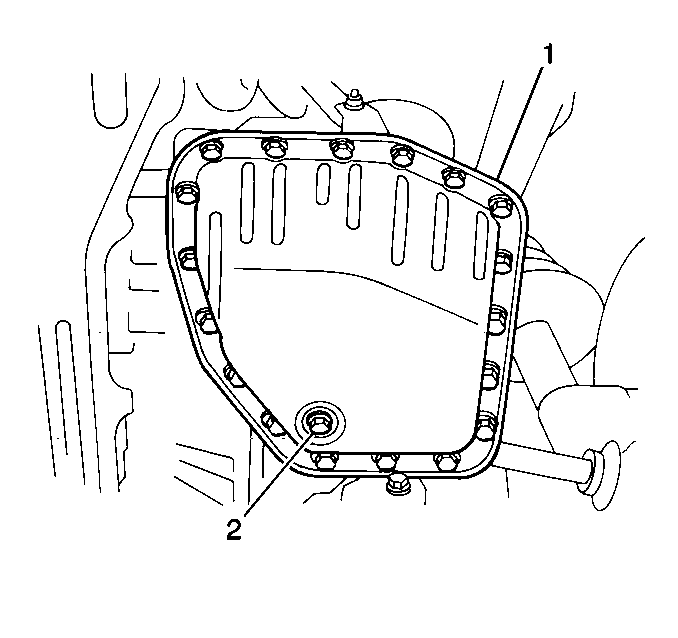
Notice: When removing the transaxle fluid pan, use caution in order not to damage the transaxle case-to-fluid pan mating surfaces. If the fluid pan is frozen to the transaxle case, use a rubber mallet and a wood block to lightly tap the fluid pan free. Do not attempt to pry the fluid pan away from the case with metal tools; damage to the case or fluid pan flange could result.
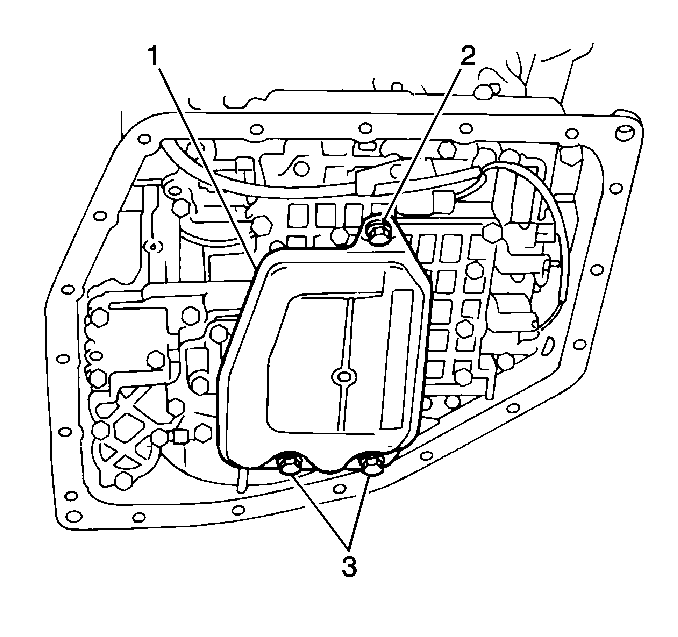
Important: A small amount of clutch material in the bottom of the transaxle fluid pan is a normal condition and is consistent with normal transaxle wear. The bottom of the fluid pan is equipped with a magnet that will collect minute metal filings. However, if large amounts of clutch material, metal shavings or other foreign matter are present, disassembly and inspection of the transaxle is indicated.
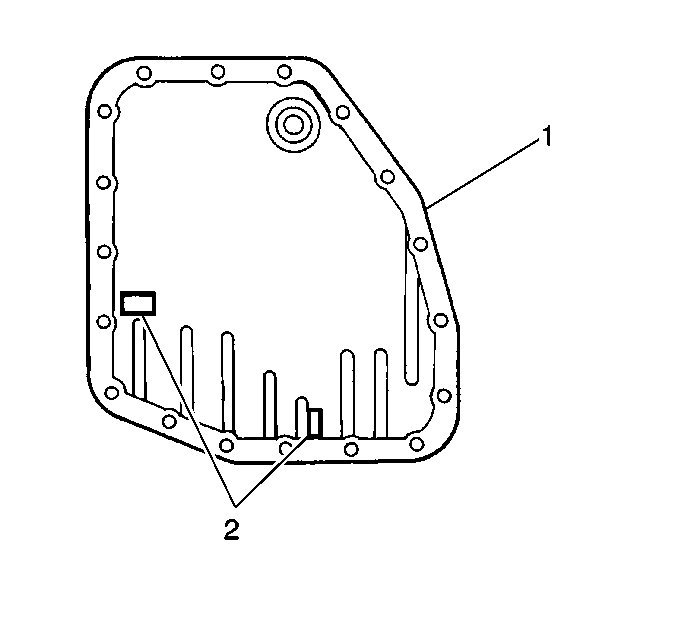
Installation Procedure
- Install the fluid filter screen gasket (1) and the fluid filter screen (2) to the valve body assembly. Secure the screen with 3 bolts.
- Install the new transaxle fluid pan gasket and transaxle fluid pan to transaxle. Secure with 18 bolts.
- Install the transaxle pan drain plug into the transaxle fluid pan.
- Remove the drain pan from under the transaxle.
- Install the left splash shield (1) to the vehicle. Secure the splash shield with the 6 bolts.
- Lower the vehicle.
- Refill the transaxle, as necessary Refer to Transmission Fluid Check .
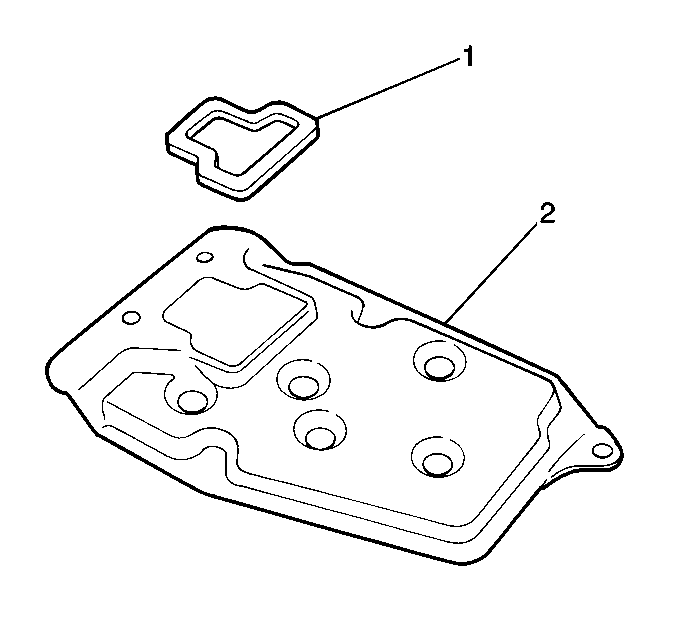
Notice: Use the correct fastener in the correct location. Replacement fasteners must be the correct part number for that application. Fasteners requiring replacement or fasteners requiring the use of thread locking compound or sealant are identified in the service procedure. Do not use paints, lubricants, or corrosion inhibitors on fasteners or fastener joint surfaces unless specified. These coatings affect fastener torque and joint clamping force and may damage the fastener. Use the correct tightening sequence and specifications when installing fasteners in order to avoid damage to parts and systems.
Tighten
Tighten the fluid filter screen bolts to 10 N·m (89 lb in).
Tighten
Tighten the transaxle fluid pan bolts to 4.9 N·m (43 lb in).
Tighten
Tighten the transaxle drain plug to 23 N·m (17 lb ft).
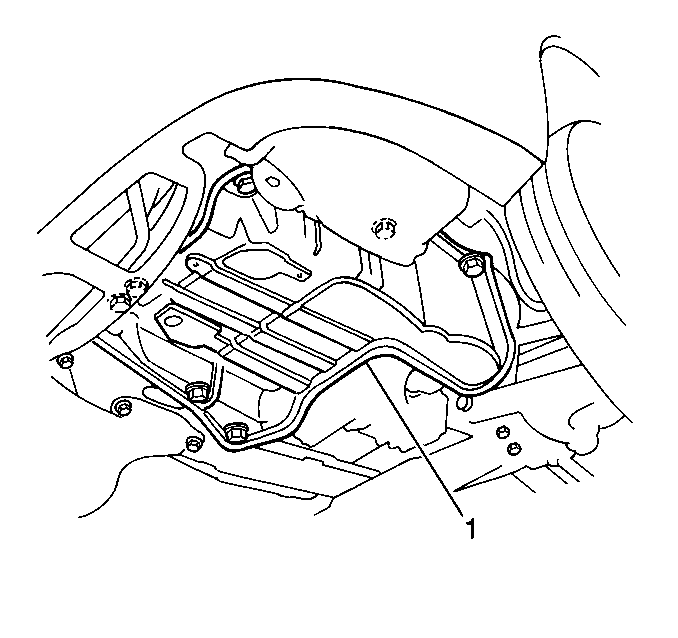
Tighten
Tighten the left splash shield bolts to 5 N·m (44 lb in).
